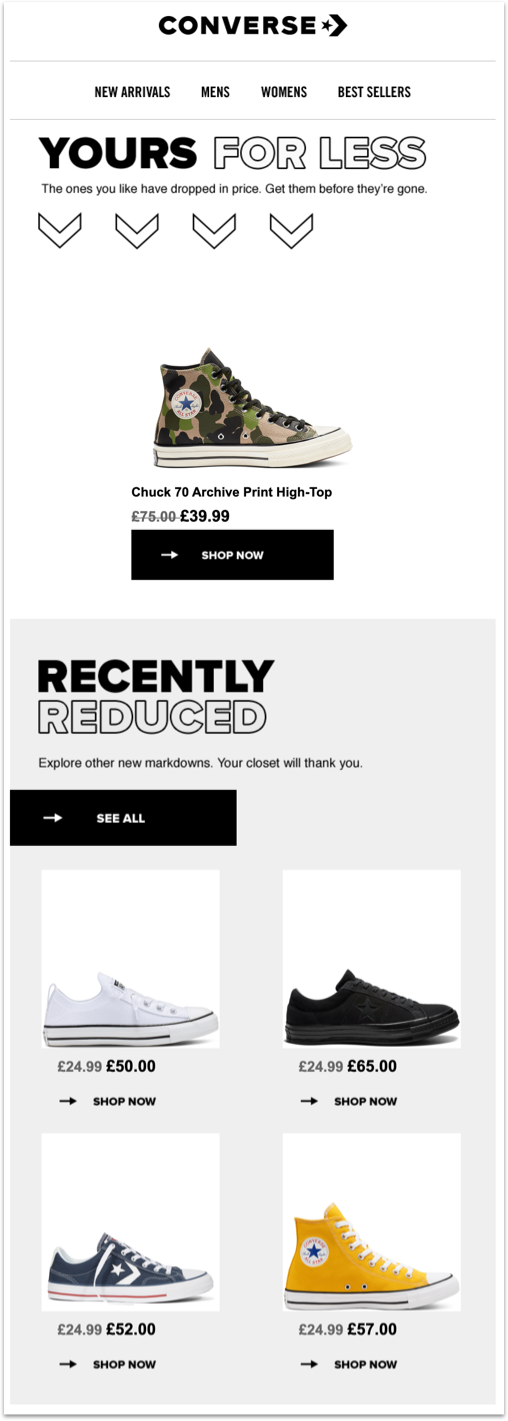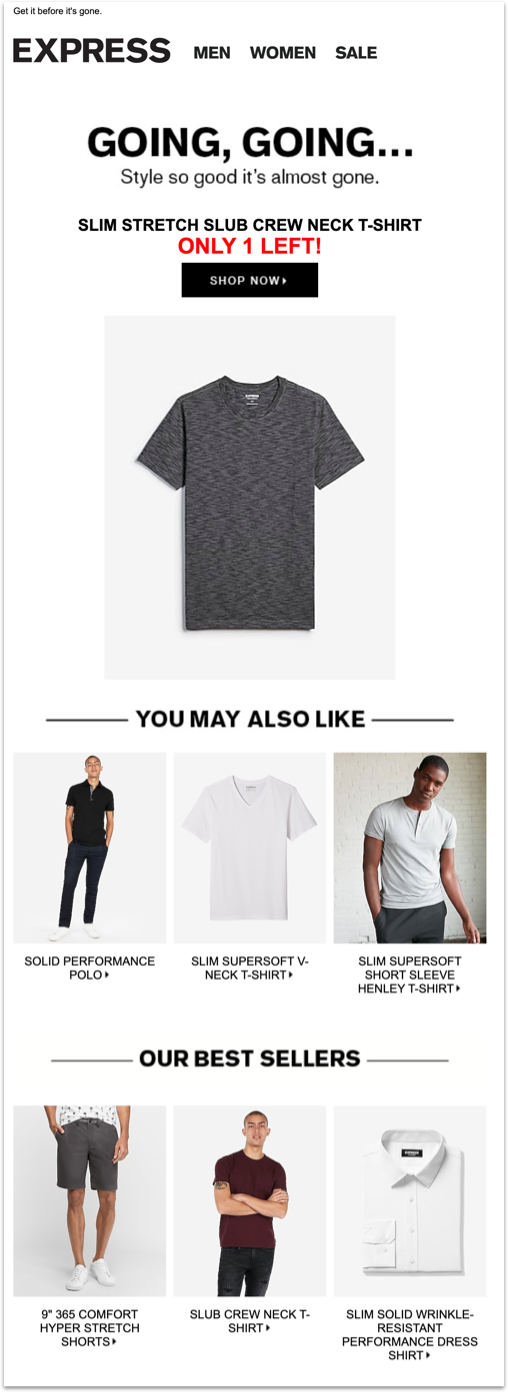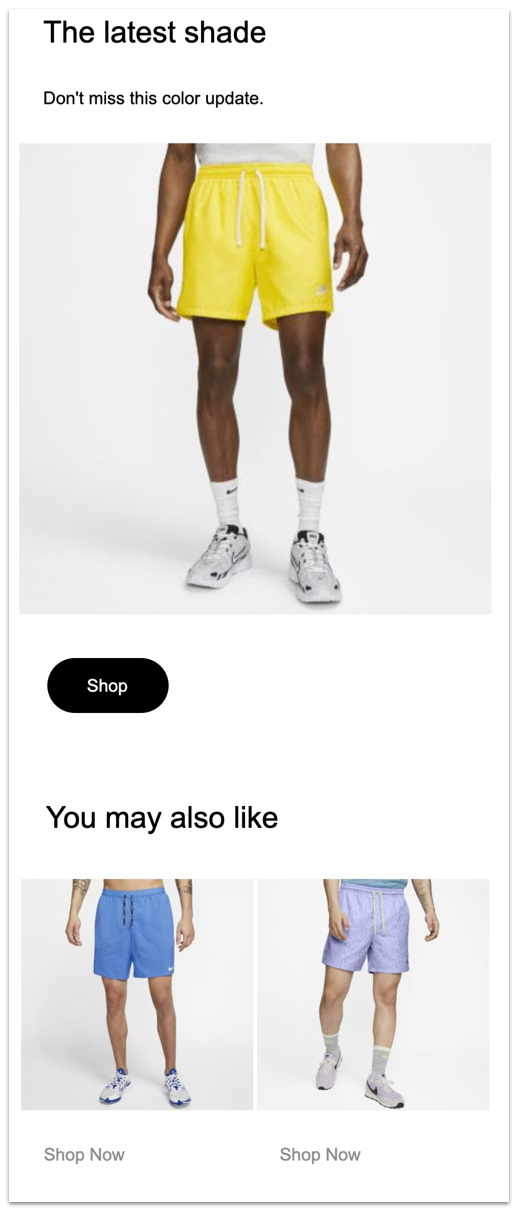
Rethinking Retail: The Apparel Marketing Playbook
Success in the apparel space is all about creating loyalty by getting shoppers engaged regularly and nurturing them on the path to purchase time and again.
However, apparel retailers typically have a wide assortment of products and SKUs for each one, which creates the need to walk a fine line between volume and relevance on the path to creating loyal customers.
To help you achieve this goal, we have a special apparel edition of our Rethinking Retail Playbook, featuring five simple plays any apparel marketing team can run today.
Play #1: Extend Reach Relevantly with Advanced Filtering
Driving more top of funnel traffic to your eCommerce site is a valuable way to engage shoppers and promote discovery, particularly when stores are closed. In fact, the right outreach via email can be just like an enticing outfit in a store window.
But how do you reach more shoppers without sacrificing relevance? One of the best ways to do so is with advanced filtering. Let’s say you have a product-driven email, such as one that highlights new products on sale. Typically, you can either take the volume play and send to your entire list (which sacrifices relevance) or you can take the relevance play and send to shoppers who recently engaged with those products (which sacrifices volume).
Advanced filtering offers a middle ground that increases volume while maintaining relevance. With this approach, you can expand the audience to include shoppers who added products to their cart that are similar to the ones featured in the email based on product attributes like division, category or brand. Critically, brands that have taken this approach have seen as much as a 5x increase in volume while also increasing clicks and revenue by more than 500%.

Play #2: Re-engage Shoppers Based on Category Affinity
Engaging customers who have been onsite recently is easy with behavioral triggered emails, but re-engaging shoppers who haven’t interacted with your brand much lately is a different story. Building audiences based on category affinity can help.
Specifically, you can build custom creative, offers and products around a specific type of apparel that aligns with your marketing calendar, such as a sale event or even products that haven’t sold as well as your team hoped, and then quickly find large audiences who have a predicted affinity toward that type of product.
Similar to advanced filtering, this approach helps expand your reach beyond simply sending to recent browsers without sacrificing relevance. As an added bonus, it also proves a powerful way to re-engage shoppers who haven’t interacted at all recently.

Play #3: Bring Offline Shoppers Online with Targeted Offers
Pushing shoppers from offline to online may be more relevant than ever in the time of COVID-19, but it remains a valuable strategy no matter what’s going on in the world. That’s because multi-channel shoppers typically spend more and are more loyal than single channel shoppers.
The best way to move offline shoppers online is to ingest offline purchase data that you can use to tailor recommendations to those shoppers in emails and onsite, even if they’ve never interacted with your brand online before.
Beyond targeted recommendations, you can create an incentive to make that first online purchase by pushing online-only products and/or sending an online-only offer, whether that’s 10% off, free shipping or anything else.

Play #4: Create a Sense of Urgency with Low Inventory Triggers
Inventory is often a huge concern among apparel retailers. Whether it’s working with a limited size run or trying to push inventory before it goes to clearance, introducing a low inventory trigger can help create urgency for shoppers to snap up those final few units.
Best of all, running this type of campaign doesn’t have to be a headache for your marketing team. With an ESP that relies on a living product catalog to power merchandising triggered emails (rather than a product feed), you can automate this type of campaign and ensure it sends to a targeted audience based on past behavior and predicted affinities.
Equally as important, the living product catalog ensures the most accurate, up-to-date data always gets pulled into emails so that customers don’t click through only to find out the product actually sold out yesterday — before the email even sent.

Play #5: Generate Excitement & Promote Variety with New Arrivals Triggers
You can also use merchandising triggered emails to generate excitement around new arrivals by notifying customers about new products that match their past behavior and/or predicted affinities.
The most advanced programs take this approach one step further by not just notifying shoppers about new products they might be interested in, but also about newly available colors within those products.
Critically, this type of promotion not only re-engages shoppers, but it also helps increase repeat purchase rates to grow loyalty.

Are You Ready to Rethink Retail?
You’ve read all the plays and put them to work, but are you truly ready to rethink retail for your apparel brand?
Find out everything you need to know in The Retail Reckoning, which explores what makes retail unique, how retail has evolved over the past 20 years and how brands can prepare for success in the next wave of retail.





